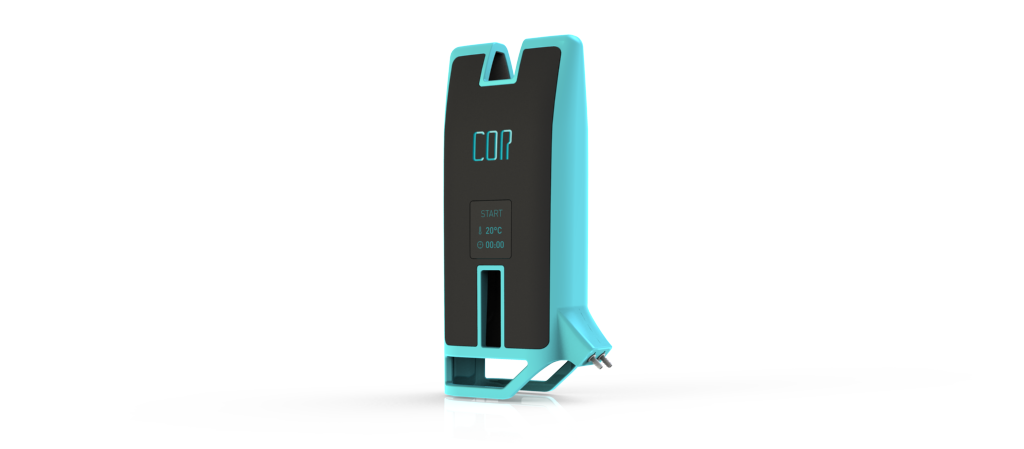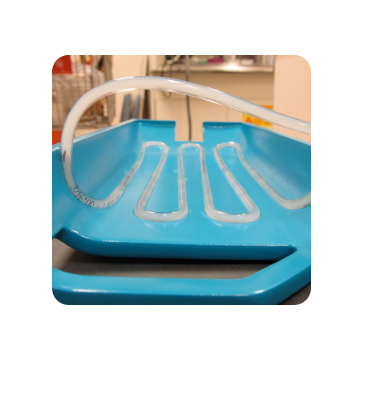

COR is a product concept created to induce therapeutic
hypothermia;
acting as a cooling holster for a standard 1L IV saline bag.
By exposing the patient to pre-hospital therapeutic hypothermia
using our COR device, the patient has a greater chance of sustaining
their quality of life, post-cardiac-arrest.

1.5 million heart attacks occur in the United
States each year,
with over 500,000 being fatal. Therapeutic hypothermia is a new medical treatment
that is gaining popularity as a preventative of
brain damage,
and even death, in post heart failure
patients (this includes heart attacks
and cardiac arrest).
Hypothermic therapy cools a patients body to an
optimal 32ºC; slowing
down and even stopping
the destructive process of cell death. The COR
device cools the saline bag down
to an optimal 4ºC that is needed
to induce
cooling treatment.


The time between a patients cardiac arrest and admission
to the hospital is crucial. Often times it is the difference between
life or death; and for that reason alone it is known as the
"golden hour". The actions taken by medical personnel are crucial
in saving the life of a cardiac arrest patient during this time.
By administering COR and submitting the patient to pre-hospital
therapeutic hypothermia, EMTs can take advantage of the "golden hour"
and experience the satisfaction of performing life-sustaining
treatment in the field.
From the inside of the device, the timer is
pushed out of COR. On the reverse side of the
time/temperature reading, the power
button is pressed, and the timer is repositioned
back into the device.
Handles on the bottom of COR are stretched
to opposing sides and the saline bag is slipped
into place. , COR's flexible material
secures itself to the saline bag, while both hang
from the designated hook.
Tubing from the cooling pump is attached to the
COR fittings.
Once the tubes are secured, the pump
is turned on and the
saline begins to chill.
When the patient is administered their IV
for cool
saline, the emergency responder presses START on
the COR timer, initiating a 12 hour countdown.




Nanoscale science and engineering promises several new
materials with unusual properties and processing capabilities
not currently available. Our task is to imagine how the
possibilities that nanotechnology seems to offer can be converted
into products and services that benefit of public health.

Researchers at Oregon State University and the Pacific Northwest
National Laboratory developed a nanostructure coating to improve
heat transfer efficiency.
Coating has potential applications
with the conventional heating and cooling industry.
Zinc-oxide
nanocoating produced a "heat transfer coefficient" 10 times higher
than uncoated surfaces.
Coils for the heat exchanger of COR are coated with this zinc-oxide nanotechnology coating to optimize heat transfer.


Paradox. The word Paradox is defined by Webster's dictionary as
"a statement that is seemingly contradictory or opposed to common
sense and yet is perhaps true." The team of four conceived their
name after this term because of the "paradox" that is created when
mammoth-sized ideas mesh with technology smaller than anyone
can imagine.
Paradox has teamed up with, and gathered research, from The Center
for Nanotechnology in Society at ASU. They have learned an exponential
amount of information that has been applied to their products;
thus allowing them to create technologically advanced devices that
are years ahead of their time.